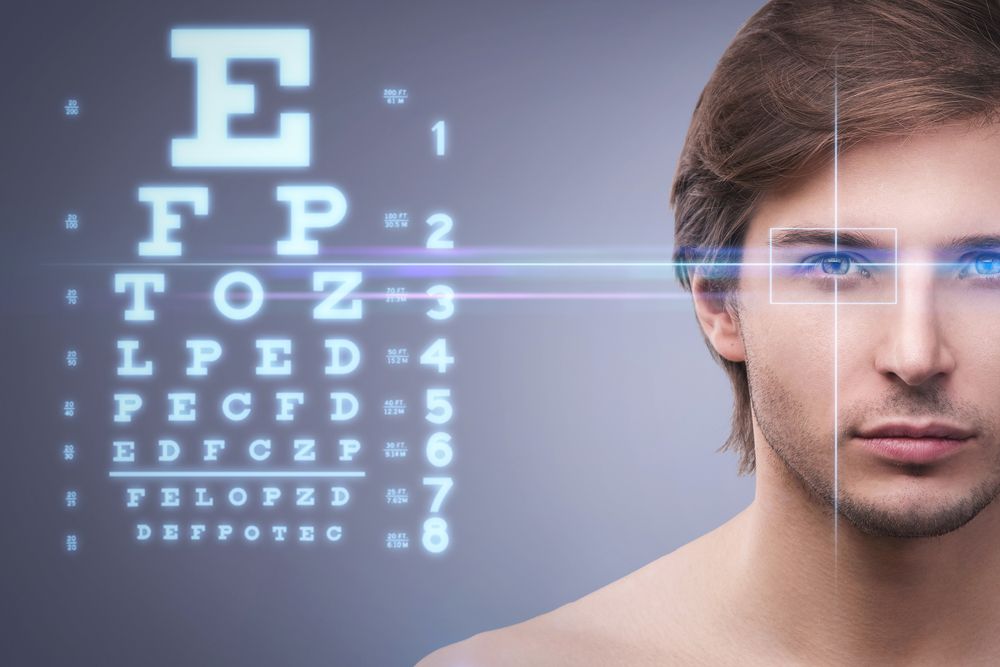Posted by: Manhattan LASIK Center

LASIK laser eye surgery is a laser vision correction technique used to treat refractive eye errors that cause nearsightedness, farsightedness, and astigmatism. In LASIK, the front part of the eye responsible for refracting light, called the cornea, is permanently reshaped so that the light passes through the eye correctly and can be interpreted properly by your brain. People who choose LASIK normally find that their vision is improved to the extent where they can see clearly without wearing glasses or contact lenses. In fact, the majority of our patients report seeing 20/20 or better following their LASIK surgery.
Before you can undergo LASIK, you will need to have a comprehensive preoperative evaluation. This helps to ensure that you are a suitable candidate for LASIK laser vision correction and that you are at minimal risk of complications during and after your surgery. The appointment will begin with a conversation where your LASIK surgeon in Manhattan NY can find out more about your reasons for choosing LASIK, your past medical and ocular history, and any medications that you take.
Here’s what you need to know about the variety of tests that are carried out before LASIK.
Visual Acuity Testing
This is the part of an eye exam that the majority of people are familiar with and involves reading letters and looking at symbols from different distances – usually a board on the other side of the room and a sheet of card held in front of you. If you currently wear glasses or contact lenses, both your uncorrected and corrected visual acuities are taken.
Topography
This is the name used to describe the process of measuring the curvature of the front of the cornea, as well as the back surface of the eye. This test is used to check for corneal abnormalities or diseases, such as keratoconus. This is important because some candidates with specific corneal abnormalities are not good candidates for LASIK.
Eye Pressure Test
Eye pressure testing is best known as a preferred method for detecting glaucoma, but this test is also carried out before LASIK to make sure that you don’t have high levels of pressure that are damaging your optic nerve. Eye pressure testing is performed either by using a small instrument to blow a tiny puff of air into the eye to measure the change in the light reflected off the cornea or a contact device. In the case of the latter, anesthetic eye drops may be given first.
Pupil Size
Your LASIK surgeon at Manhattan LASIK Center will use an infrared camera to measure the size of your pupils and the variations that occur in different light levels.
Corneal Thickness
Also known as pachymetry, a corneal thickness evaluation is used to ensure that your cornea isn’t too thin to be outside of the recommended safe limits for LASIK laser eye surgery. The thickness of your cornea can be measured in a number of ways but is most often determined using an OCT scanner.
Pentacam HR
The Pentacam HR provides a 3-D image of the anterior part of the eye using a specialized high-resolution rotating camera. This helps accurately measure the center and the pre-surgical thickness of the cornea, which is critical for planning for LASIK, and for delivering great vision post-operatively. The Pentacam HR provides the most accurate corneal thickness measurements in the world. It also measures changes in both the front and the back surface of the cornea, thereby providing important information about the health of the eye prior to surgery.
Once all of the necessary tests have been completed, your LASIK surgeon at Manhattan LASIK Center will be able to confirm your candidacy for the procedure and schedule your sight-changing appointment. For more information about the tests that are performed before LASIK, don’t hesitate to schedule a FREE virtual consultation or call 212-759-9617 with any questions.

